Best rangefinder binoculars 2025: Observe and measure distance with your binoculars
Want to find just how far away a terrestrial subject is? We've rounded up the best rangefinder binoculars, which also do well for stargazing. An excellent gift for the outdoors enthusiast.
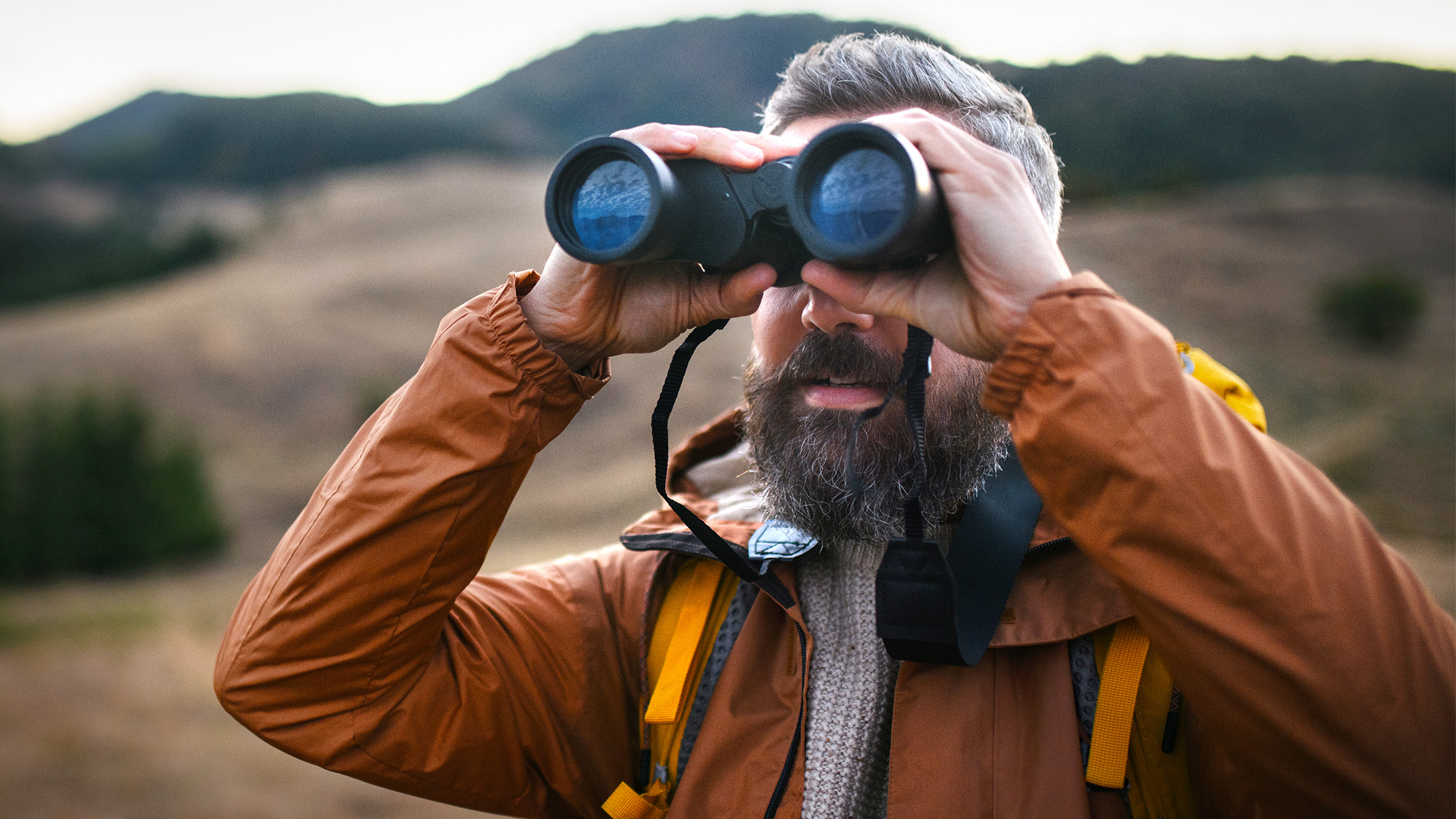
Whether you're birdwatching or golfing, rangefinder binoculars allow you to both zoom in on a subject and determine its distance accurately. But with so many models available, which one do you choose? To make things simpler, we've rounded up the best rangefinder binoculars into this handy guide.
While their rangefinding functionality is limited to Earth (you can't measure the distance to Mars), these binoculars are also great for stargazing.
Rangefinder binoculars tend to be more expensive than regular binos, so while we have included some budget options, you're still paying a premium. That said, they are a great big gift item for the holidays, so do some research now if you know someone who would love to open a pair on the big day. Alternatively, if you decide rangefinding isn't worth the extra expense, take a look at our guides to the best binoculars and best budget binoculars.
The quick list
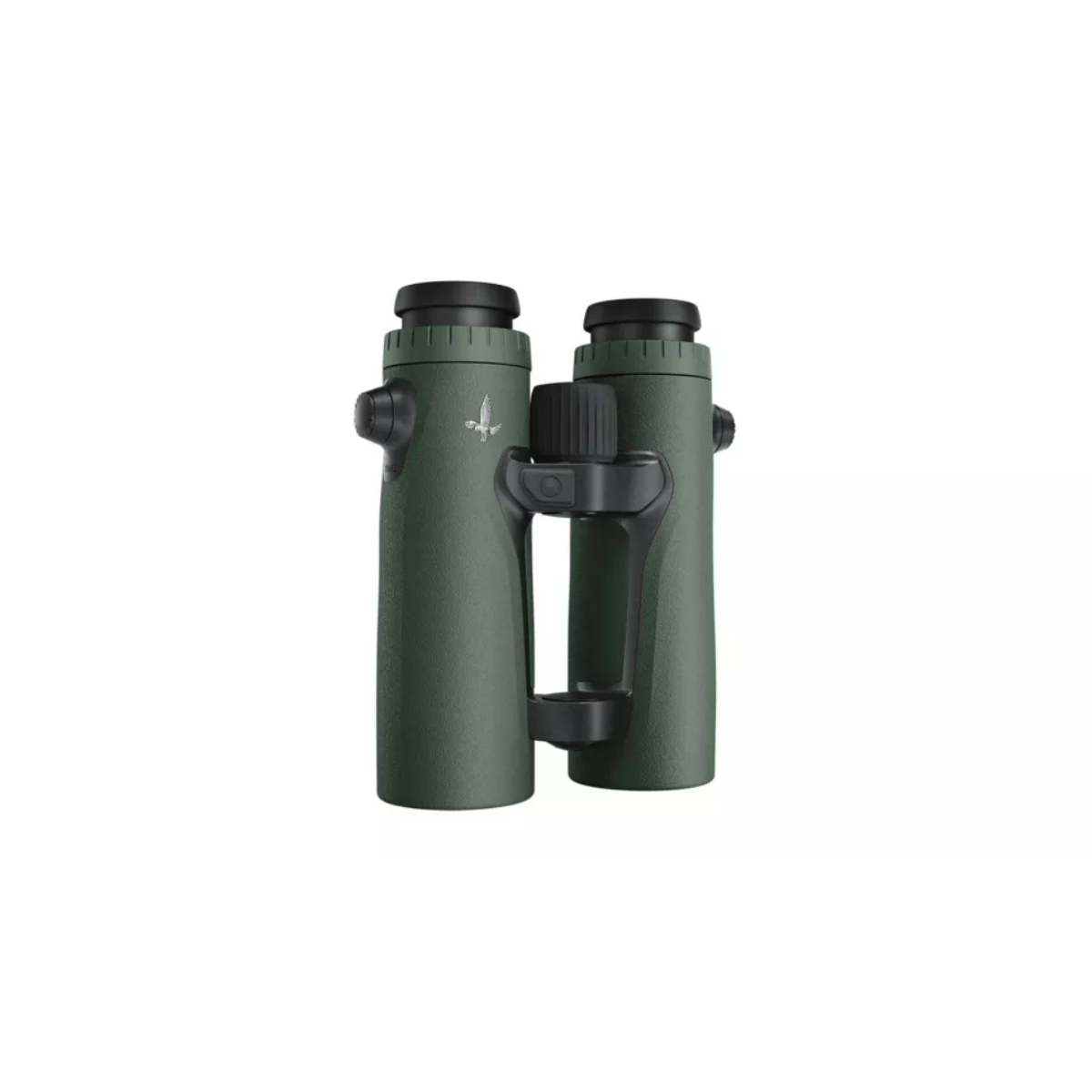
Best for optical quality
Though they sit at an eye-watering price point, these rangefinders edge over the competition in terms of optical quality thanks to their fully multi-coated glass lenses and prisms.
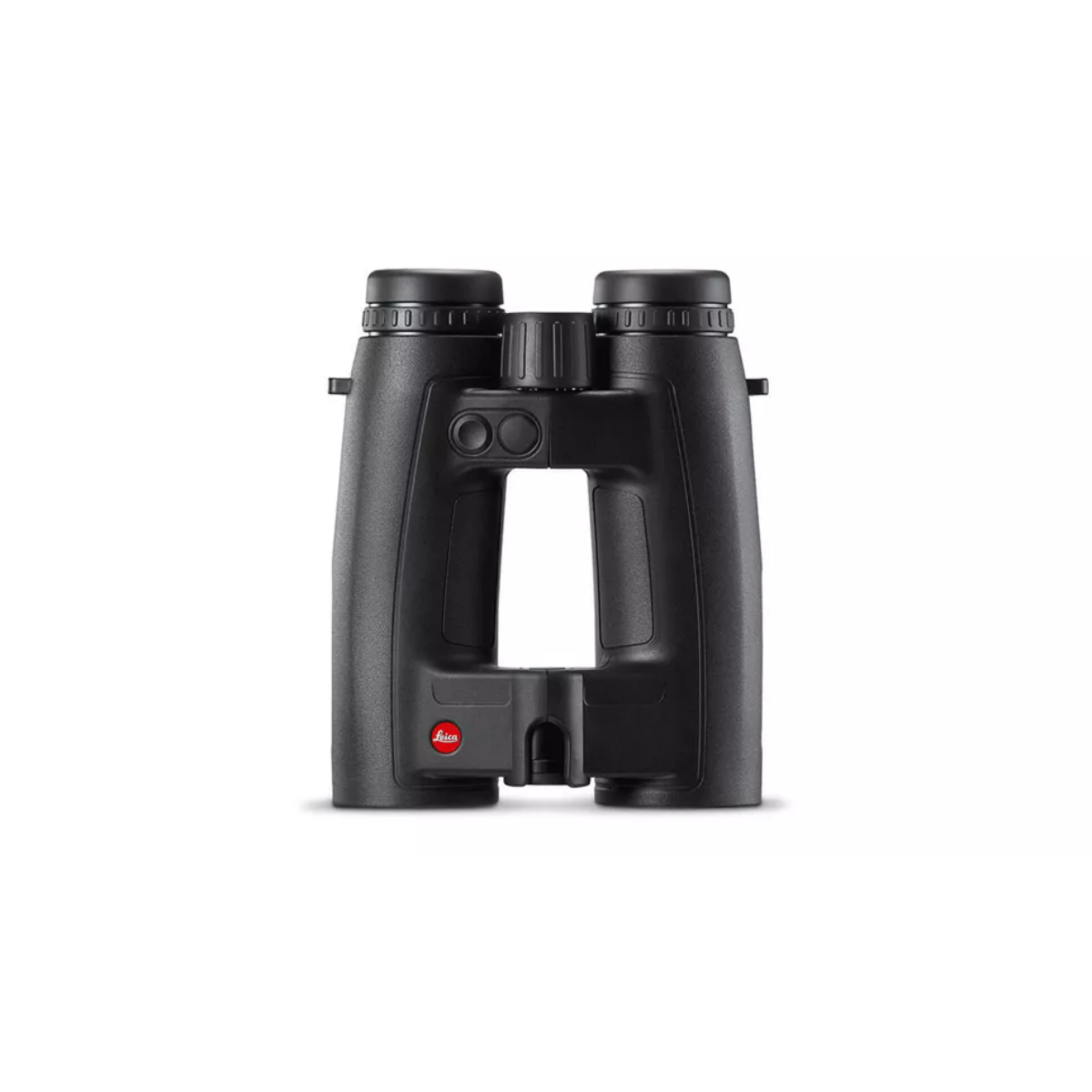
Best for technical proficiency
The perfect combination of optical performance and technical capability. Their glass boasts 91% light transition so you get sharp images from edge to edge.
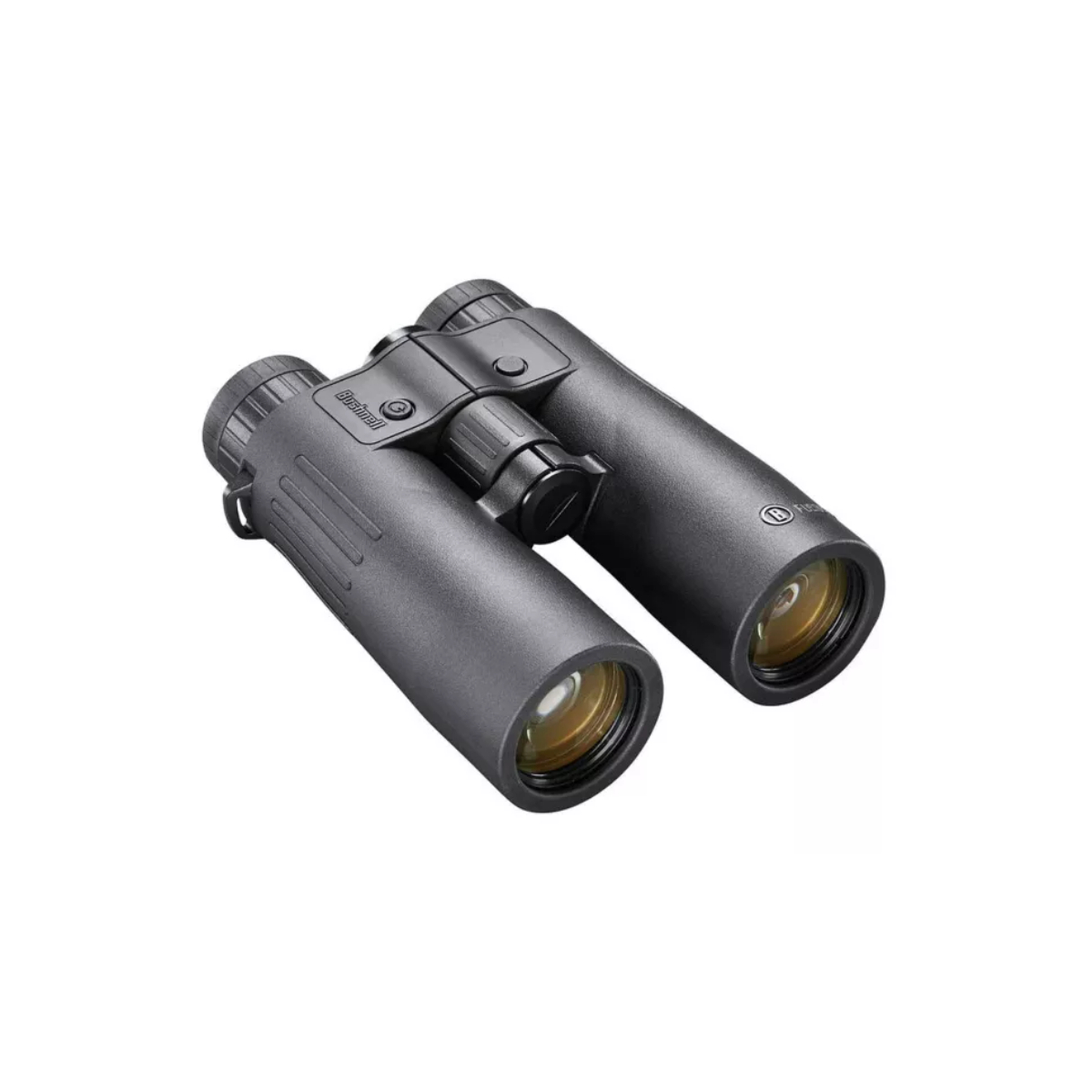
Best budget option
These are decent rangefinders at an affordable price point, we're happy to recommend them as a good budget pair for those in search of good quality optics that don't break the bank. They're waterproof to IPX7 too.
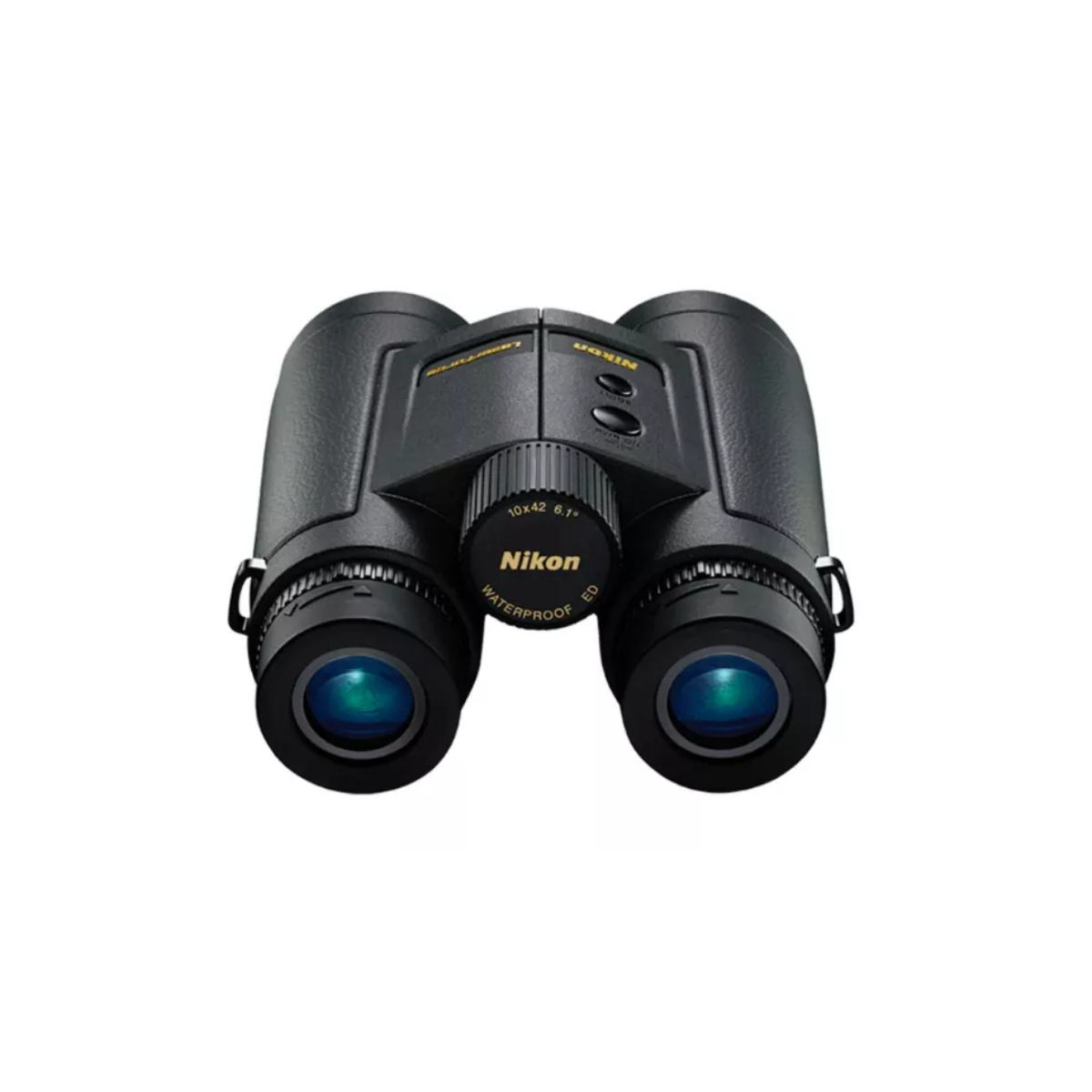
Best mid-range model
If you're looking for a rangefinder from a well-known and trusted brand, give these a try. It has a limited range compared to others here, but it's still powerful enough for most users.
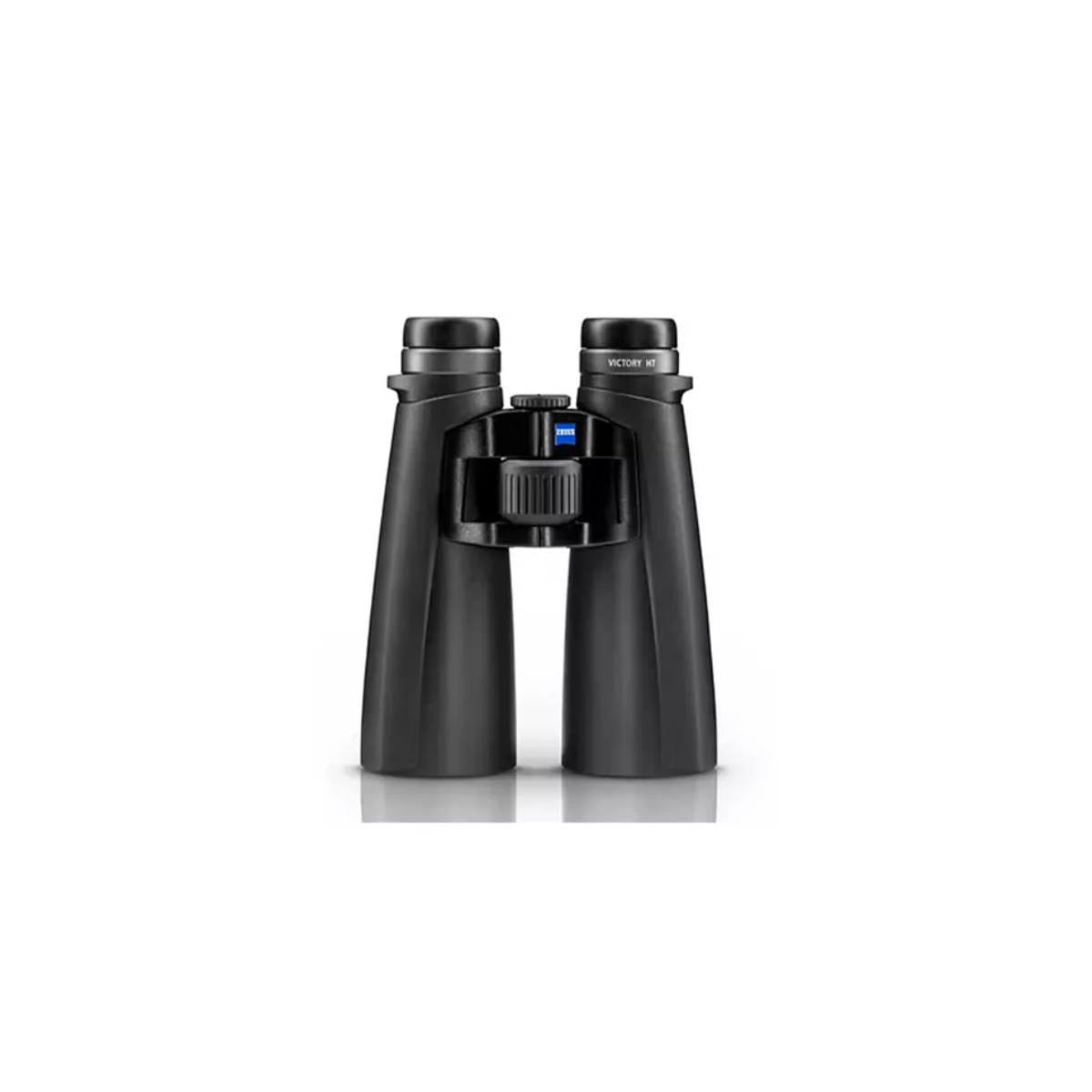
Best build quality
Zeiss is a prestige optics brand, so you won't be surprised to hear they offer great optical quality. The powerful laser rangefinder is more than adequate, and you can send the information from the binos onto the dedicated Zeiss app.
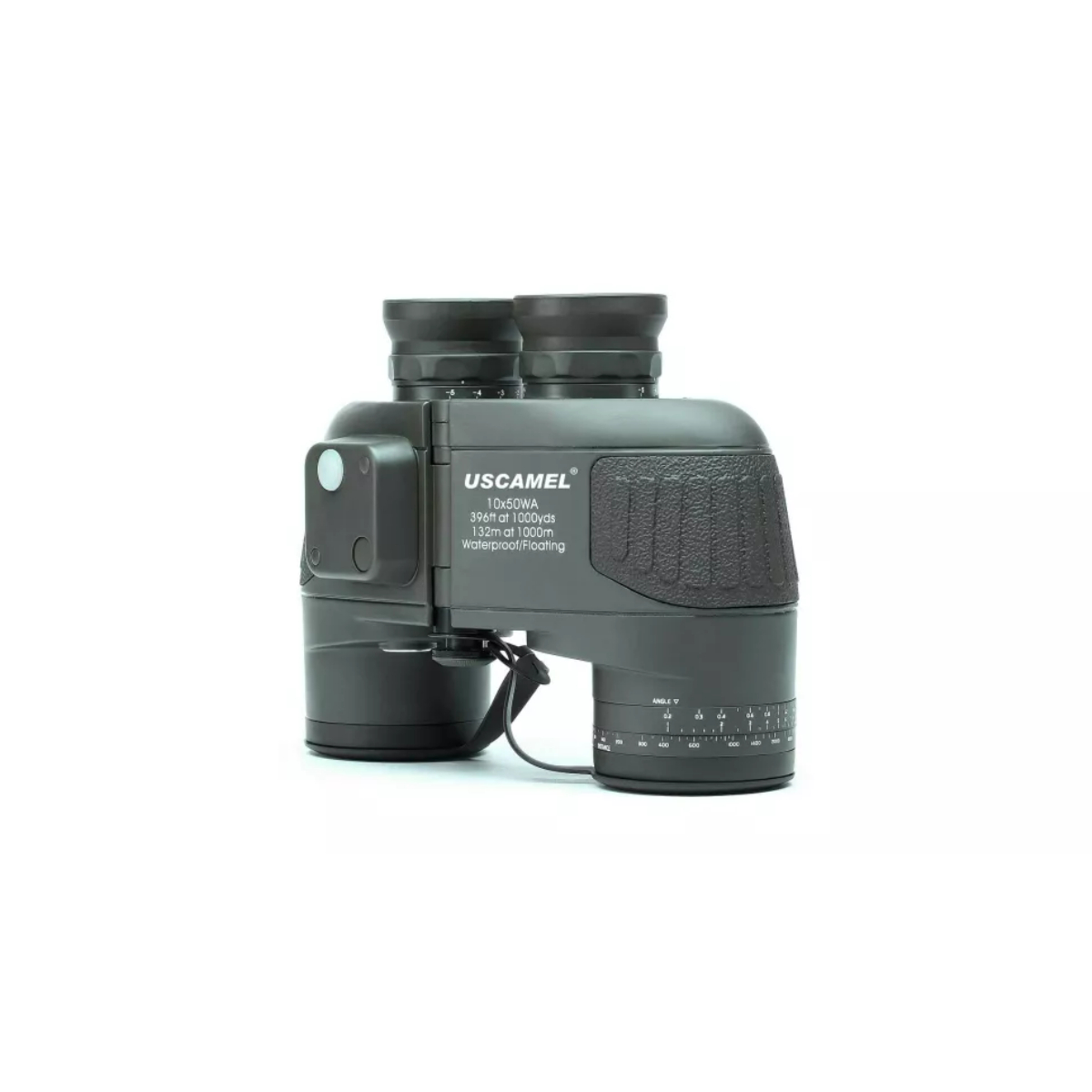
Best budget non-laser rangefinder
This is an affordable pair that offer good-quality optics. They have a reticle (like crosshairs on a rifle scope) that help you calculate the distance of your subject. Not particularly accurate, but robust and budget friendly.
Best rangefinder binoculars we recommend 2024
Why you can trust Space.com
Best optics
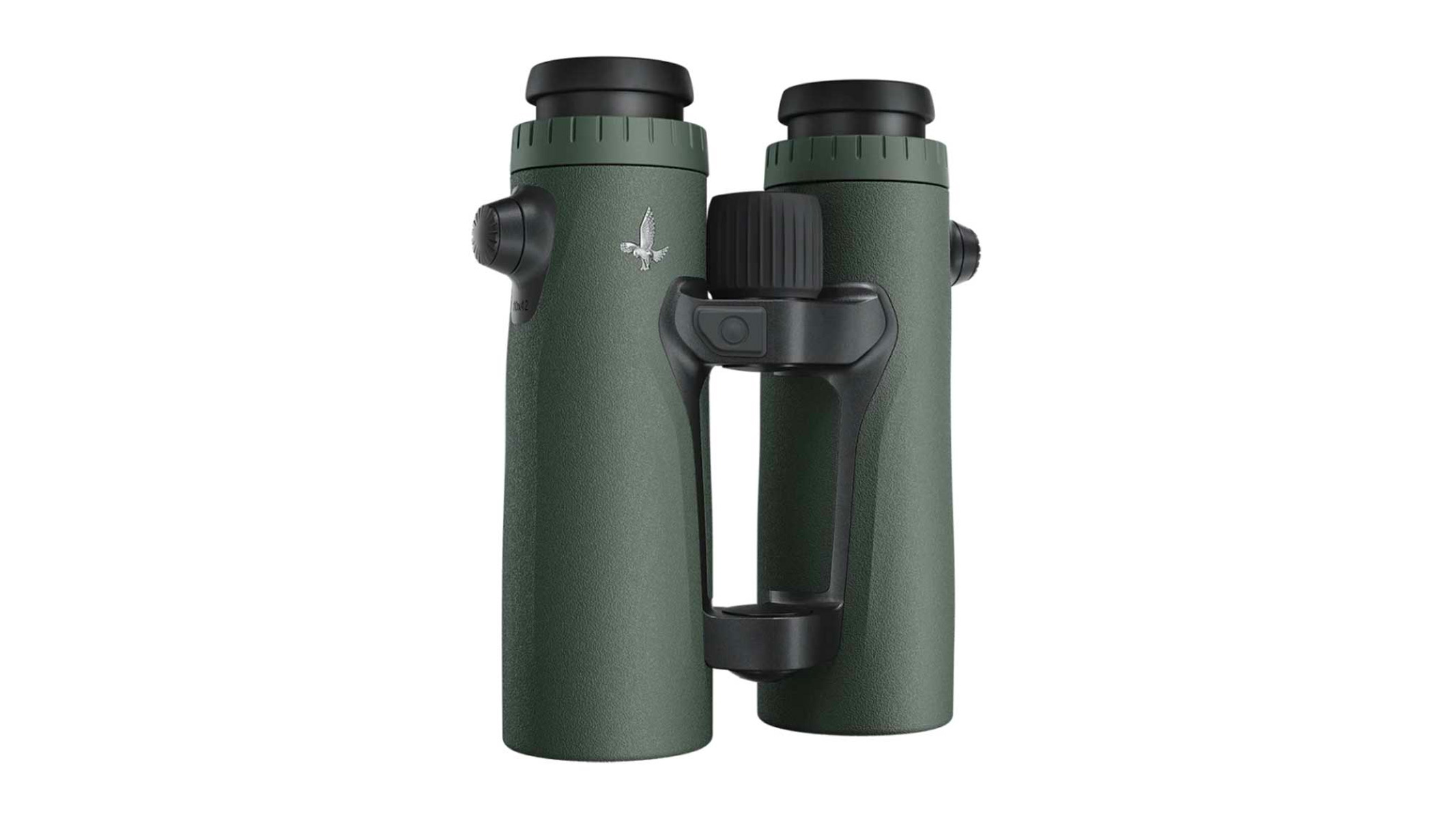
Swarovski EL Range 10x42
Our expert review:
Specifications
Reasons to buy
Reasons to avoid
✅ You only want the best: These binoculars tower above the competition and the image is sharp from edge to edge, but you will have to dig deep into your pockets to invest.
✅ You're techy: They come with a dedicated app that shows ballistics and range corrections.
❌ You need a longer laser: The laser range extends to 1370m which is the shortest range out of the other top picks in this guide.
🔎 Swarovski EL Range 10x42: The crème de la crème of rangefinder binoculars, but a huge investment. ★★★★½
The Swarovski EL Range 10x42 earns its spot on the top of our last thanks to its impressive optical quality. It's one of the best rangefinder binoculars out there because it offers incredibly bright and clear images thanks to 42mm objective lenses as well as 90% light transmission. It excels in low light too.
The standout feature of the Swarovski Range binoculars isn't just their optics; they also excel in measuring technology. With a laser range of 1370m, though slightly less than some competitors, it's still more than sufficient. Plus, you'll receive an accurate measurement in about half a second. What's more, you can effortlessly link these binoculars to your smartphone for seamless data transfer.
Of course, it's important to note that the Swarovski EL Range 10x42 binoculars are prohibitively expensive. These aren't a tool for amateurs; serious rangefinder binoculars only. But if you can afford it, you're getting a seriously great piece of kit for your money, and this is a pair of binoculars that will last for a long time to come.
These binoculars offer a 10x magnification and have a twilight factor of 20.5. We think this makes them a preferable option compared to Swarovski's EL Range 8x42 binoculars, which, despite being similarly priced, feature a smaller magnification and only offer a twilight factor of 18.3.
- See our Best compact binoculars guide for more portable binos
Attributes | Notes |
|---|---|
Design | High-end multi-coated lenses. |
Performance | Razor-sharp images right to the edges. |
Functionality | Ballistics app and range corrections. |
Best technical capability
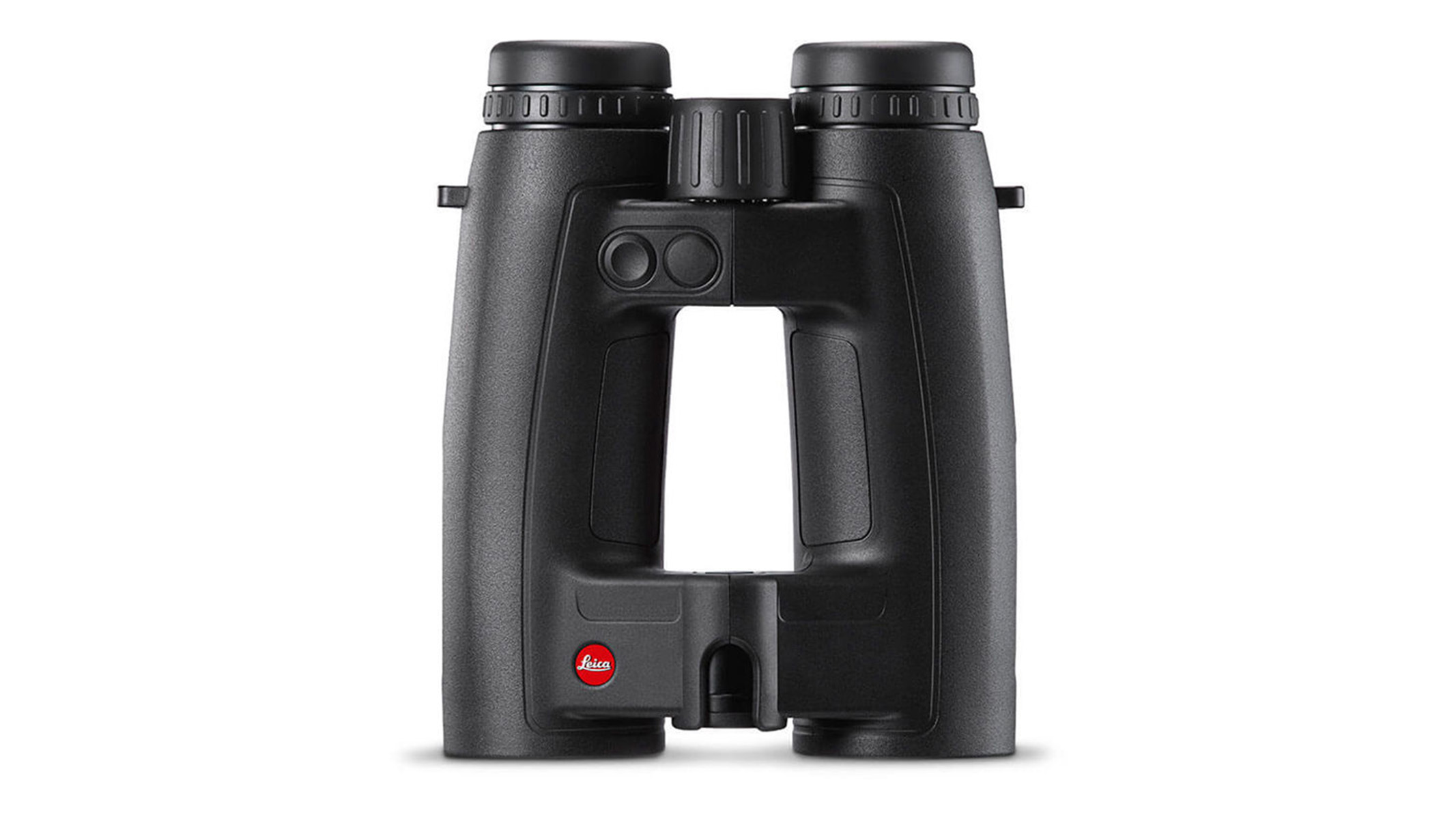
Leica 10x42 Geovid 3200.com
Our expert review:
Specifications
Reasons to buy
Reasons to avoid
✅ You like tech: These are ideal for tech-savvy long-distance spotters. The slick app displays all the ballistic measurements you could ask for; you can customize how they are displayed (for example units of distance).
✅ You need measurements quickly: It takes just 0.3 seconds for the rangefinder to take a single measurement.
✅ You will be spotting in inclement weather: These rangefinders are nitrogen purged for use in all weather environments and they are waterproof to a distance of 16 ft/5m.
❌ You have a small budget: These rangefinders cost almost $2500, an eye-watering cost if you won't be using them often.
🔎 Leica 10x42 Geovid 3200.COM: If you need rapid measurements, look no further, if you can afford to. ★★★★½
The range on the Leica 10x42 Geovid 3200.COM is exceptional, and this pair of binoculars can measure up to 3,200 yards (2,926 meters). This is the longest range, by some distance — meaning the Geovid 3200.COM should be a must-have if you need a pair explicitly so you can measure the longest distances.
Weighing in at just 2.1 lbs, these binoculars are surprisingly lightweight considering their impressive tech features. They come equipped with integrated Bluetooth, allowing you to connect to a smartphone app where you can personalize and store all your ballistic measurements. Distance readings are insanely fast, taking only 0.3 seconds, and they also include built-in weather sensors for real-time air pressure, temperature and angle data. Their ergonomic design makes them comfortable to hold, but they can also be mounted on a tripod if needed.
These binoculars have more to offer than just their design: they also feature excellent optics, thanks to a unique Perger-Porro prism design. With a wide field of view of 342 feet at 1000 yards and BaK-4 glass providing 91% light transmission, they deliver bright, sharp views right to the edge of the image, even in low-light situations.
There's no escaping that these are eye-wateringly expensive binoculars, but they come with a 30-year warranty to give you peace of mind, and with their rugged build, we've no doubt that they would last you for years. They're also nitrogen-purged and waterproof at depths of up to 16ft/5m for added protection in any weather.
- Wildlife spotting at night? Take a look at the Best night vision binoculars
Attributes | Notes |
|---|---|
Design | Perger-Porro prism design. |
Performance | Offers measurements in 0.3 seconds. |
Functionality | Bluetooth and customizable ballistic measurements. |
Best budget rangefinders
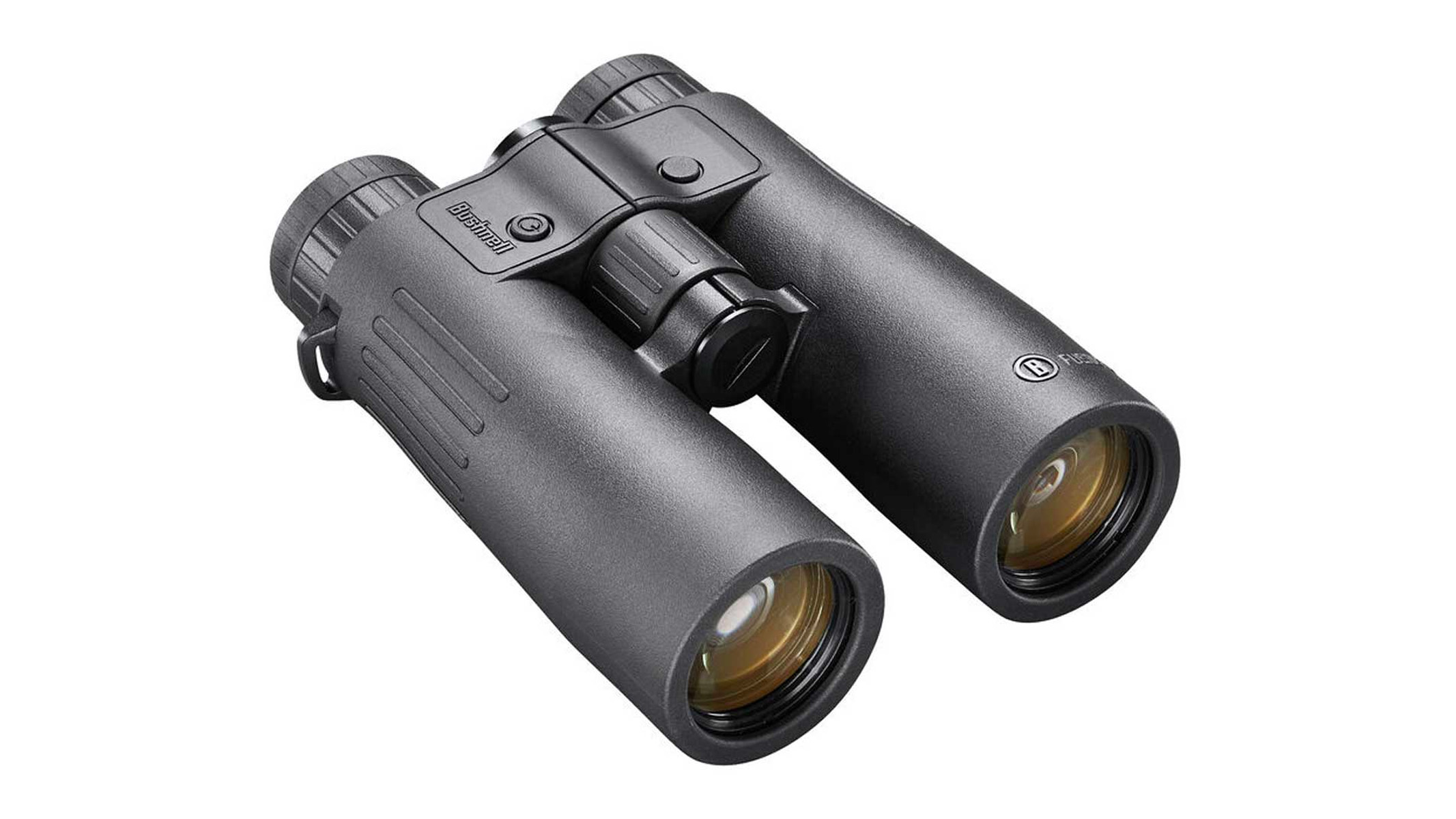
Bushnell Fusion X 10x42
Our expert review:
Specifications
Reasons to buy
Reasons to avoid
✅ You like getting good value for money: Historically we have been a bit wary of Bushnell as we've found some of their products to be a bit too budget, but these are good quality at a decent price point.
❌ You're looking for a lightweight model: Though it's not much heavier than other models on this list, you can still save a couple of ounces by purchasing a different model.
🔎 Bushnell Fusion X 10x42: If you can find them in stock, snap them up if you're on a budget — they're great value for money. ★★★★
There are a few weaker entries in Bushnell's range of low-cost binoculars, but the Fusion X 10x42 bucks that trend. It's a great pair of affordable rangefinder binoculars that overperformed when we got hands-on with it.
Although they can' compete with the most expensive and optically advanced rangefinder binoculars, they're an excellent pair for what you pay — offering great value if you're on a tight budget, there's little downside in picking up the Fusion X
The laser can reach up to a mile in favorable conditions and comes with several helpful features. With ActivSync Reticle Technology, it adjusts the display color from black to red based on lighting conditions automatically. Plus, Angle Range Compensation allows you to view both the true horizontal distance and the distance for your specific line of sight, which is useful for observing subjects uphill or downhill from you.
We also love how robust and sturdy the Bushnell Fusion X 10x42 binoculars are. They come with IPX7 waterproofing, so you don't have to worry about getting caught out in the rain — it means they can be submerged up to 1m for 30 minutes. The lenses also come fully coated, protecting against fog, dust and oil.
- For more generalist observing we've rounded up the Best binoculars on the market
Attributes | Notes |
|---|---|
Design | Handy ActivSync display. |
Performance | Accurate with good-quality optics. |
Functionality | Laser reach of up to a mile. |
Best mid-range model
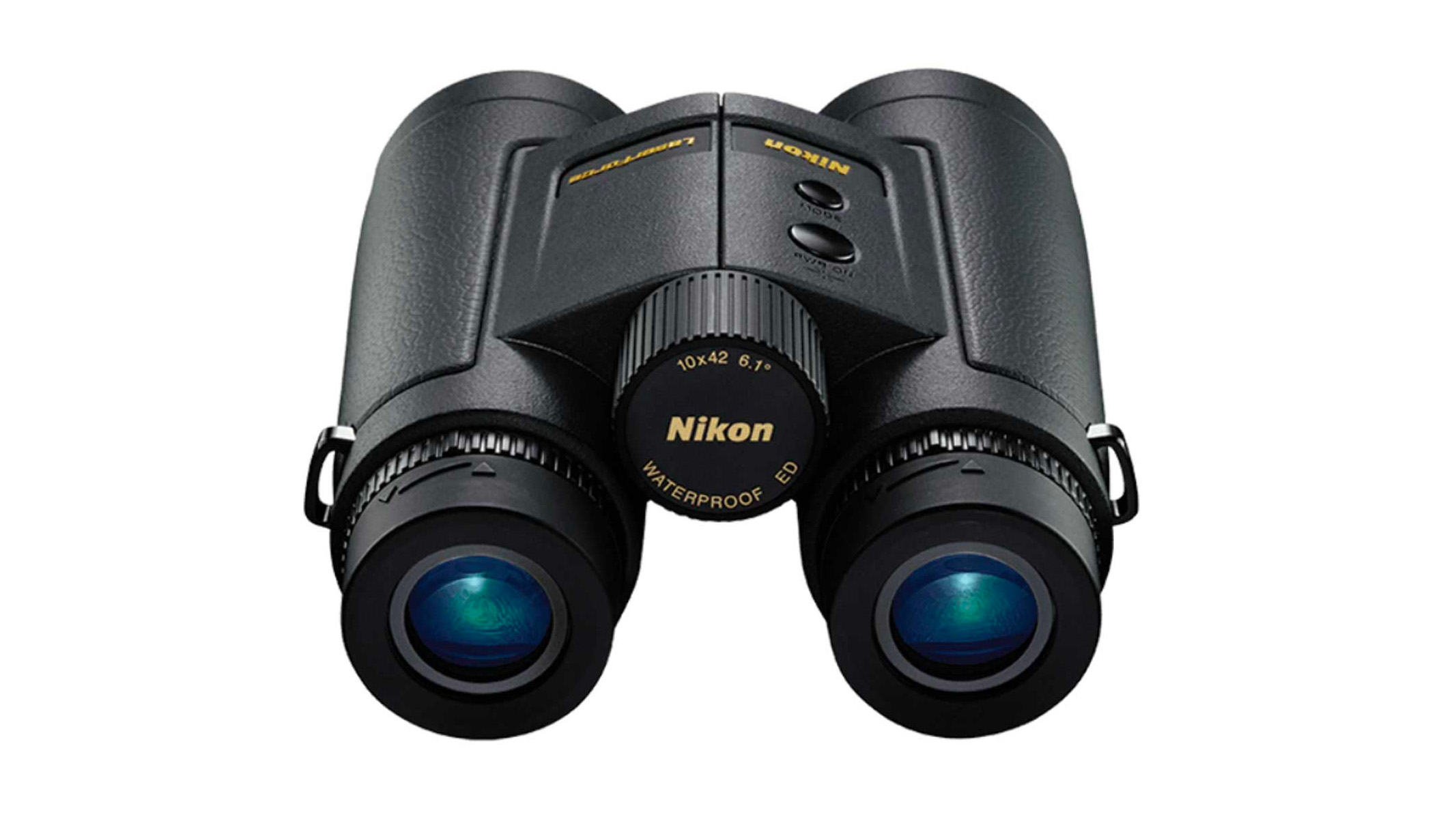
Nikon Laserforce 10x42
Our expert review:
Specifications
Reasons to buy
Reasons to avoid
✅ You like reputable brands: Nikon has been a leading manufacturer of optical instruments since 1917 so you know the products can be trusted, which is good as the warranty policy isn't the best.
❌ You need an exceptionally long laser: Though the 1750m range is more than enough for most users, choose something else if you need it to go further.
🔎 Nikon Laserforce 10x42: A great mid-range pair from a trusted brand, the 1750m range will be enough for most users. ★★★★
While the Nikon Laserforce 10x42 rangefinder binoculars aren't a budget pair, you will be investing in a brand that can boast fantastic optics. These binoculars are ideal if you're looking for a great mid-range pair.
The Laserforce can be used in various weather conditions, given they're rubberized, waterproof and fog-proof — while nitrogen-purged internals mean they're free from the prospect of mold or rot. If anything does go wrong, it's worth knowing that Nikon offers a lifetime warranty on optical parts and a seven-year warranty on non-optical parts. However, electronic components are only covered for one year — which can be disappointing considering these are crucial to running some of its best features. Without these parts, you're just left with a heavy and expensive pair of regular binoculars.
The ID (incline/decline) system compensates for angles up to 89 degrees. As you'd expect from Nikon, the optics are top-notch, with fully multi-coated lenses and prisms, and even include extra-low dispersion (ED) glass to correct chromatic aberrations that would otherwise cause color fringing.
Of course, there are some trade-offs from the higher end of this list. You won't have the longest laser here: the Nikon Laserforce 10x42's laser reaches 1750m, which is more than adequate for most users, but if you need a longer reach, you will have to pay more.
- Check out the Best cameras for astrophotography to start photographing the night sky
Attributes | Notes |
|---|---|
Design | Rubberized, water and fog resistant. |
Performance | Excellent optics with ED glass. |
Functionality | 1750m laser range. |
Best build quality
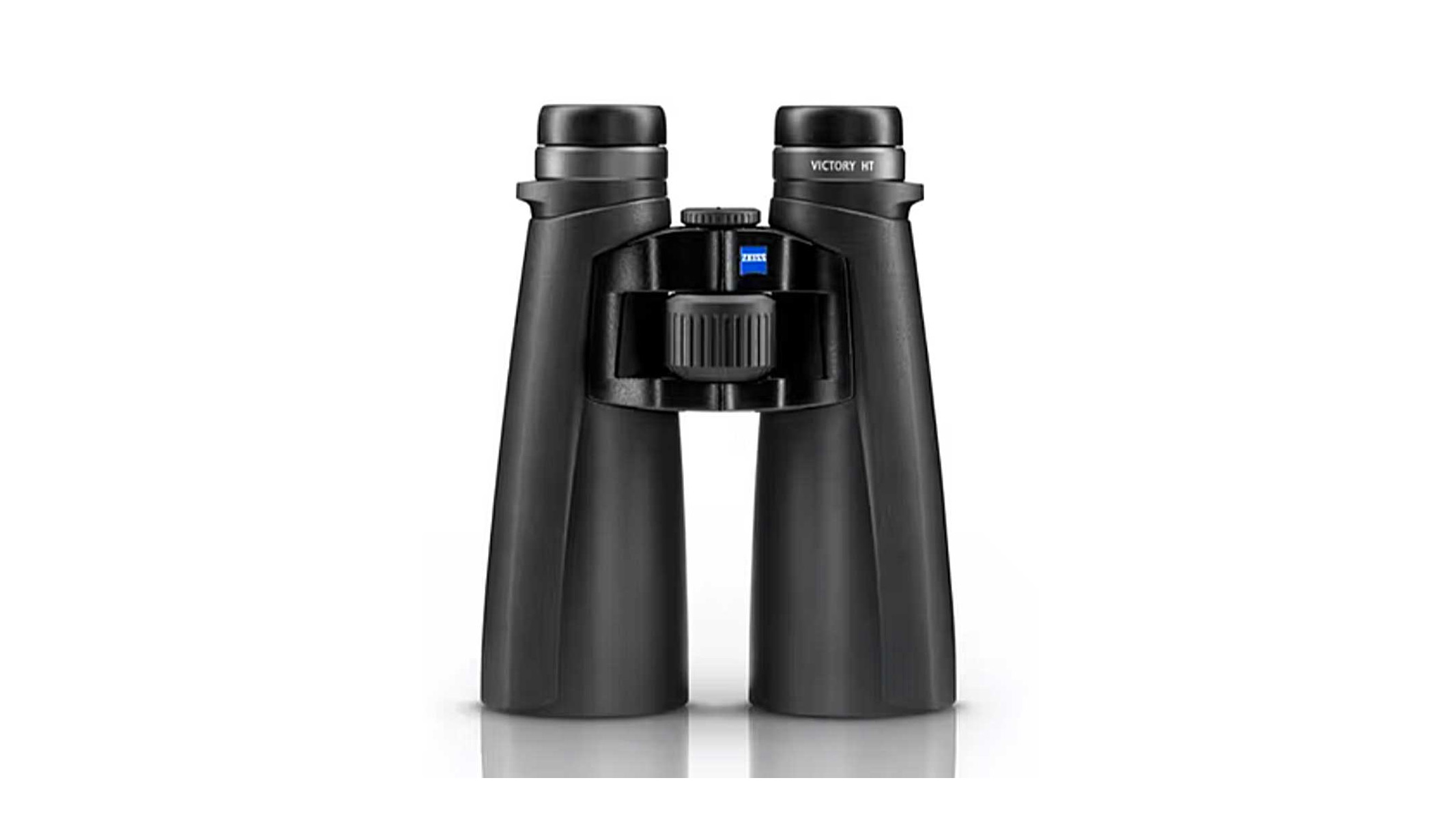
Zeiss Victory 10x54
Our expert review:
Specifications
Reasons to buy
Reasons to avoid
✅ You will be using them in inclement weather: Zeiss developed and utilizes LotuTec which is a coating that means a clear and unhindered view in all weather conditions.
❌ You're sticking to a budget: These rangefinders are a significant investment and cost nearly $3000. In reality, they are reserved for professional spotters.
🔎 Zeiss Victory 10x54: Outperforming many other laser rangefinders — a reflection of the top-quality engineering that's gone into them. ★★★★
We know what to expect from Zeiss when it comes to the optics in its binoculars, and that's why the Victory 10x54 rangefinder binoculars are up there as one of the best. When coupling its technical supremacy with the quality of the rangefinder, you get a really handy tool to use while viewing objects in the field.
Of course, this comes at a cost — and this premium pair is designed for power users who want the best performance. The Victory 10x54 binoculars are impressively engineered and will prove a great investment. You can even grab them in different setups — with 42mm or 54mm objective lenses — as well as 8x and 10x magnification. That said, the 10x54s are still our favorite.
Zeiss Victory binoculars use fluorite lenses coated with their multi-layer T-coating to maximize light transmission, which on paper is 95%. The eyepieces also include a second coating called LocuTec that deters moisture and dust.
It's not really surprising, then, that these laser rangefinder binoculars outperform most others in terms of optics, but also in data and speed. You can send your range data to your smartphone using a dedicated Zeiss app, for example, and use it to calculate things like corrections for critical tilt and environmental factors.
- Keep everything steady with one of the Best travel tripods
Attributes | Notes |
|---|---|
Design | Fluorite lenses with T-coating. |
Performance | 95% light transmission. |
Functionality | Bluetooth and Zeiss smartphone app. |
Best budget non-laser rangefinder
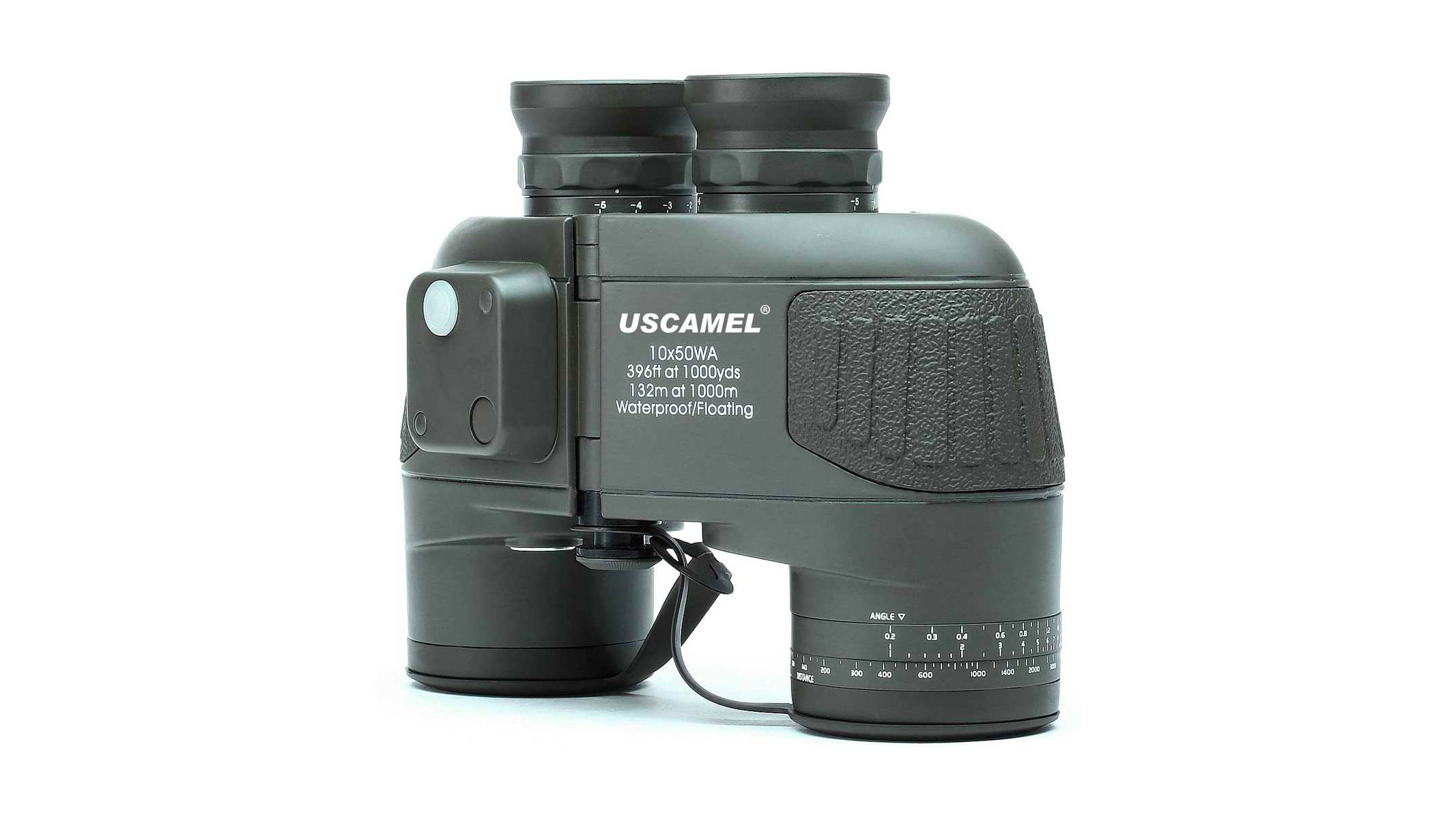
USCamel 10x50 UW004
Our expert review:
Specifications
Reasons to buy
Reasons to avoid
✅ You have a tight budget: These don't have any of the bells and whistles that the laser rangefinders do, but sitting at the $100 price point, they are definitely one of the cheapest solutions.
❌ You don't like mental math: These are manual rangefinders, which means no laser to bounce back and tell you how far away something is. It is not accurate or convenient like a laser rangefinder.
🔎 USCamel 10x50 UW004: A cheap rangefinder solution, but you'll have to do the calculations in your head. ★★★
The USCamel binoculars don't use a laser. They actually use a reticle, also known as a graticule, that's superimposed on the image in the right tube — making it look a little like the crosshairs down a rifle scope. Opting for the only rangefinder binoculars on our list that don't use laser technology also means you'll be able to grab them for a much lower price than many alternatives.
It takes some mental calculation and knowing the size of your target, but this method gives you a pretty accurate rangefinder measurement without the high cost of laser binoculars. However, it's not as convenient as using a laser, and since you're relying on your own calculations, there's a chance they won't be spot-on.
Importantly, however, the USCamel 10x50 UW004 binoculars themselves are of excellent build quality, which we were surprised with considering it's a lesser-known brand. They come with top-of-the-range BaK-4 glass which is fully-coated, and the body is nitrogen-purged waterproof.
- Discover the Best DSLR cameras on the market
Attributes | Notes |
|---|---|
Design | Recticle rather than laser. |
Performance | Not the most accurate, but rugged and affordable. |
Functionality | BaK-4 glass, fully multi-coated and waterproof. |
Best rangefinder binoculars: Comparison
Product | Rating | Magnification | Objectives | Eye relief | Laser range | Waterproof | Weight | Warranty |
Swarovski EL Range 10x42 | ★★★★½ | 10x | 42mm | 19mm | 1370m | Yes | 2 lb (925g) | Lifetime |
Leica 10x42 Geovid 3200.com | ★★★★½ | 10x | 42mm | 16mm | 2926m | Watertight to a depth of 16 ft/5 m, no rating specified | 2.1 lb (980g) | 30 years |
Bushnell Fusion X 10x42 | ★★★★ | 10x | 42mm | 16mm | 1600m | IPX7 | 2.1 lb (992g) | Lifetime |
Nikon Laserforce 10x42 | ★★★★ | 10x | 42mm | 15.5mm | 1750m | Yes | 1.9 lb (876g) | Lifetime |
Zeiss Victory 10x54 | ★★★★ | 10x | 54mm | 15.5mm | 2300m | Waterproof to 5m | 2.1 lb (960g) | Limited lifetime |
USCamel 10x50 UW004 | ★★★ | 10x | 50mm | 7.1mm | N/A | Yes | 2.6 lb (1220g) | 30 day returns |

Russ Swan is a UK-based freelance science writer and author with a love of all things related to space and aviation. He built his own 100mm refractor telescope from some bits found in a military surplus store, and once had lunch with Neil Armstrong. His popular science book The Physics Behind… explains not just how the universe works, but why. He tweets (occasionally)!
Best rangefinder binoculars: Frequently Asked Questions
What are rangefinder binoculars?
How do rangefinder binoculars differ from normal binoculars?
Rangefinder binoculars are like regular binoculars but can also measure their distance from subjects during observation. This is helpful for wildlife spotters and hunters.
Most rangefinder binoculars have an eye-safe laser that beams onto subjects during viewing. This laser beam is reflected back to the binoculars sensor and the distance is calculated, displaying in the binoculars for the viewer. However, there are some manual models (one of which we've included above) that use a reticule (or a graticule) to allow observers to calculate distance manually.
When is Amazon Prime Day Big Deals Days in October?
Tuesday Oct. 7 and Wednesday Oct. 8, ending at midnight. Check out our Prime Day hub, where we will publish all of the best rangefinder binocular deals.
What are the best rangefinder binoculars?
The Swarovski EL Range 10x42 are the best rangefinder binoculars and rank at the top of our guide. However, they may be out of the price range of many generalist or hobbyist observers. Another premium pair is the Leica Geovid 3200.COM 10x42 which cost about $1000 less.
What are the best rangefinder binoculars under $500?
The USCamel 10x50 UW004 are the best rangefinder binoculars under $500 but do not use a laser to measure distance; you have to make the calculations yourself. If a laser is a must-have, we'd recommend the Bushnell Fusion X which is on average around $550.
What are the best rangefinder binoculars under $1000?
The Nikon Laserforce 10x42 are the best rangefinder binoculars under $1000. They are lightweight (1.9 lb or 876g), have a laser range of up to 1750 meters, and are waterproof. Their price fluctuates to just either side of $1000, so if you spot them for less, be sure to snap them up.
What rangefinder binocular glass is best?
When choosing rangefinder binoculars, the most important factor to consider is the optical quality. No matter how sophisticated the electronics or other features are, if you can't get a clear image of the subject, the binoculars are useless. Look for binoculars with fully multi-coated lenses (FMC), BaK-4 glass, and phase-corrected prism coatings. Some high-end manufacturers, such as Zeiss, use fluorite glass and proprietary coatings to maximize light-gathering ability.
How long do rangefinder binoculars last?
When choosing rangefinder binoculars, it is important to consider build quality and warranty. Binoculars range from splash-proof to submarine-grade waterproofness, and nitrogen-purged internals can help prevent fogging. It is also important to check the laws in your area to make sure that the binoculars you are considering are legal to own.
Where are the best rangefinder binocular deals?
As with any significant purchase, it really pays to shop around. The market for binoculars with rangefinders is rapidly changing as manufacturers strive to continually improve their products with new features and improved electronics. This means that bargains can sometimes be found among discontinued devices if you don't feel the need to own the very latest rangefinder technology.
Do rangefinder binoculars need batteries?
Yes, laser rangefinder binoculars like the Nikon Laserforce 10x42 will require power in order to work so will require batteries. Most models accept CR2 batteries. However, there are some manual models like the USCamel 10x50 UW004 which do not use a laser and instead rely on a reticule (graticule) so do not require batteries.
Can I link my rangefinder binoculars to my smartphone?
Yes. Models that use Bluetooth in this guide include the Zeiss Victory 10x54 and the Leica 10x42 Geovid 3200.com. Nowadays, a lot of rangefinder binoculars come with dedicated smartphone apps that gather data over Bluetooth and make corrections for the weather and inclination. That's great if you don't mind getting your phone out, but it's worth checking what information is actually displayed in the viewfinder before making a choice.
What if rangefinder binoculars aren't for me?
Be sure to check our other binocular guides — we have put together the top picks of the best binoculars, the best binoculars for kids, the best compact binoculars and best night vision binoculars too.
What do I need for my rangefinder binoculars?
Our top tip is to always carry a spare battery with you. The majority of the devices in this review use a standard CR2 battery and should deliver thousands of distance measurements before needing replacement, but for the cost and size of a small CR2 battery, it's worth pocketing it before heading out to avoid disappointment.
Update log
Editor's note 06/18/25: Updated intro with information about the new moon-darkened skies and other night sky sights.
How we test the best rangefinder binoculars
To guarantee you're getting honest, up-to-date recommendations on the best rangefinder binoculars to buy here at Space.com we make sure to put every bino through a rigorous review to fully test each instrument. Each rangefinder binocular is reviewed based on a multitude of aspects, from its construction and design, to how well it functions as an optical instrument and its performance in the field.
We look at what functionality they have, how easy they are to operate, whether eye relief can be adjusted for spectacles wearers, if a binocular comes with appropriate accessories or carry bags and also make suggestions if a particular set of binos would benefit from any additional kit to give you the best viewing experience possible.
With complete editorial independence, Space.com ensures you get the best buying advice on binoculars, and whether you should purchase a particular instrument or not, making our buying guides and reviews reliable and transparent.
Breaking space news, the latest updates on rocket launches, skywatching events and more!

Russ Swan is a UK-based freelance science writer and author with a love of all things related to space and aviation. He built his own 100mm refractor telescope from some bits found in a military surplus store, and once had lunch with Neil Armstrong. His popular science book The Physics Behind… explains not just how the universe works, but why. He tweets (occasionally)!
- Kim SnaithFreelance contributor
- Tantse WalterContributing Writer
- Keumars Afifi-SabetLive Science Channel Editor, Technology
- Chris McMullenContributing Writer
- Kimberley LaneContributing writer
- Harry BennettE-commerce Staff Writer
